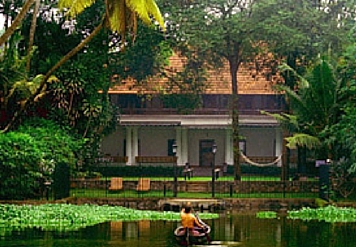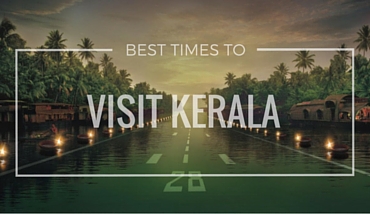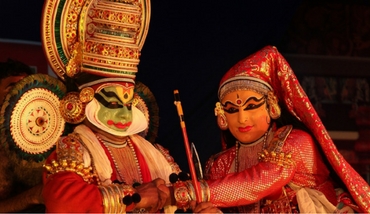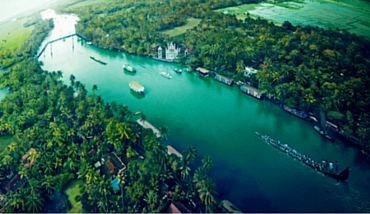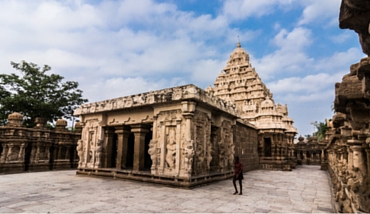- Aug 25,2016
- Post Comments
What travellers must know about Kerala's chequered history

Indus Holidays
Explorer Team
.jpg)
Kerala has always been a noticed land throughout history and many people have come and gone leaving a mark on the land. From the creation of Kerala by the Lord Parasurama to the early Dravidian culture to the spice wars that ensued between colonial powers to the social transformation of Kerala and finally its progression to the fastest growing tourism destination in the world, Kerala has a long and interesting story to tell. Read on as we take you along a gist of interesting events in the mosaic history of Kerala.
Parasurama and the Creation of Kerala
.jpg)

The legend is that the land of Kerala was reclaimed from the sea when Lord Parasurama threw his axe from Kanyakumari and it landed in Gokarna.

According to the Indian philosophy, when evil overwhelms the good in the world, Lord Vishnu awakens from his celestial sleep and takes on an earthly incarnation to set things right. Parasurama was one such avatar, a Brahmin whose aim was to get rid of the Kshatriya king Kartaveerarjuna and his descendants. By the time Parasurama was done, twenty – one generations of the Kshatriya family had been wiped out, and he had done enough killings to fill five rivers with blood. In penitence for his sins and to prevent his soul from eternal damnation, learned men advised Parasurama to give the land conquered by him to the Brahmins. So from Kanyakumari he threw his axe into the ocean and it fell near Gokarna. All the land in between was reclaimed from the ocean to form Kerala. While this might seem to be fiction, there is geological evidence supporting the claim of Kerala's elevation from the sea as an after effect of some kind of seismic activity.
Prehistoric & Early Civilization
.jpg)

The prehistoric inscriptions at Edakkal caves in Wayanad is a significant mark of the times

It is believed that the region was inhabited during the Neolithic times with dolmens belonging to this period being found. The Edakkal caves in Wayanad have stone carvings dating back to 5000 B.C. The first recorded history is seen only in the inscription of the Mauryan Emperor, Ashoka. During the Sangam period, three major powers ruled over the different parts of Kerala - Ays in the south, the Cheras in Central Kerala and Ezhimalas to the north. Among them, the Cheras were the most dominant rulers. The first ever ruler of Kerala recorded was the King Chera, who ruled from Vanchi. Kerala got its identity when it separated from Tamil Nadu and associated with the second Chera Empire and developed Malayalam as their regional language in 14th century.
Looking for a tour to cover edakkal caves and some pristine sites of historical importance in India? Look no further.
Colonial Era: A period that contributed most to the uniqueness of Keralan culture
The First Visitors
The Arab and Jewish traders were the first to frequent the Malabar Coast and start exporting Kerala’s spices to the west. These contacts, in turn, led to the arrival of Christianity and Islam into Kerala. It was during this period that St. Thomas (Jesus Christ’s disciple) reached Kerala and Christianity began to prosper. With the destruction of Jerusalem church by the Romans, the Jews fled from Israel and some of them reached Kerala. In 644 A.D., Malik Iben Dinar reached Kerala and constructed many mosques and popularised Islam.
Soon the merchants from West Asia established coastal posts and settlements in Kerala. A fresh wave of trading history with the Europeans ignited a new era of development. Long before till the 3rd century B.C, Egyptians, Phoenicians, Chinese and Babylonians had trade relations with Kerala. Europe in the 15th century was a land in turmoil. Venice controlled the spice trade and the other European powers wanted this monopoly to end. Determined to find an all – sea route to the East, which was a land for its spice bounty, Portugal – with the help of its strong mariner – kings, chose a man called Vasco da Gama to head the voyage. It was an endeavour that changed the history of the world. Vasco da Gama set out on his historic voyage and arrived at Kappad, near Kozhikode in the month of May, 1498
.jpg)
The Spice Wars
Soon after the discovery of Kerala a period of spice wars ensued between colonial powers for the coveted land of Kerala. Portuguese under the leadership of Vasco da Gama established in Kerala only to be pushed out by the Dutch in the Malabar Coast. The 16th century saw the rise of French and British Supremacy and Travancore's Navy crushed the Dutch. Soon the British overcame the French and the Dutch to become the greatest power in Kerala.
The British rule
The Britishers also had great fascination towards Kerala due the spices and various other resources of the region. The Britishers could easily subdue the rulers of Kerala because these rulers had lack of unity among them. Kochi and Travancore were the important kingdoms in Kerala during that time. The oppressive rule of the British in Kerala lead to various patriotic and brave uprisings like Velu Thampi (Travancore), Pazhassi Raja (Wayanad) and Paliath Achan (Kochi) but were systematically defeated by the British. Despite all the unfair trade, the advantage of the British rule is that they brought drastic changes in the social and cultural lives of the people. The English missionaries played an important role in developing the living standards of the natives. Slavery was eradicated and new education institutions as well as hospitals were opened. Railway lines, roads and bridges were constructed by them. In fact, modernization was brought by the British.
The Social Transformation
The power and divide of the caste system was what the British survived on to maintain their supremacy. This oppression of the lower castes led to movements for equality under the likes of Sree Narayana Guru, who said ‘One Caste, One Religion, and One God for mankind’. Ayyankali also led protests to get equal rights for lower castes to use public areas. The climax of the social transformation happened with the legendary Vaikom Satyagraha in 1924 after which temple entry restrictions for lower castes were done away with. The untouchability was eradicated in Kerala which gave way for education and social development of the state on an unprecedented scale.
Can we interest you in a journey that takes you back in time to the lifestyles of the royals and feudal lords of Kerala? Click to discover.
Modern Post-Colonial period & the rise of tourism
.jpg)

Kerala’s phenomenal rise as a tourism destination has brought it back to the global notice yet again

Kerala princely states of Travancore and Kochi were among the first to join the Indian union back in 1949 immediately after independence. It was on November 1, 1956 that the present day Kerala state was created. In 1957 history was created when the world’s first democratically elected communist government came to power in Kerala under the leadership of the legendary E.M.S. Namboodiripad. It was the radical reforms with a pro-labourer motive under this government that laid the foundation of the famed “Kerala model of development” (which was discussed in the UN). By 1991 Kerala had achieved total literacy and has currently a standard of living comparable to developed countries. Kerala, throughout its history has reputation for being in the forefront, which is displayed with its trade and later as an example of social development for the world to follow.
Today, the World travel and tourism council declares Kerala as the fastest growing tourist destination in the world. With Kerala, the world has always had a reason to stand up and take notice of and the history is still in the making!
Related Tour Packages
Related articles
New Articles
-
1
Apr 23,2019
Nehru Trophy Boat Race 2019: Booking Options
-
2
Apr 19,2019
Nehru Trophy Boat Race: The essential guide
-
3
Jan 19,2019
Everything you need to know about an Ayurveda Holiday in Kerala
-
4
Aug 10,2018
Thinking about Kerala for your next holiday? Start right here!
-
5
Jul 09,2018
Ten secrets to a fascinating backwater experience: Discover it!
Send An Enquiry
WE ARE SOCIAL, LET’S CONNECT


